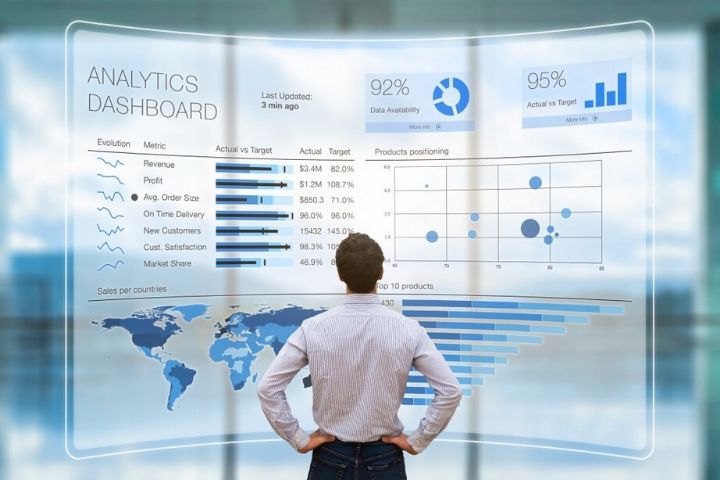Much has already been said about the role of information in modern organizations, but with the evolution and development of Big Data, this becomes even more visible. The evidence clearly suggests that executives who have tight control over their data and information are more likely to gain a competitive advantage over their rivals.
In other words, Big Data and Business Intelligence are designed to act together and elevate the intelligence of the data, making them invaluable assets for the company.
Business Intelligence (BI) is one of the oldest concepts when it comes to data processing, but combining it with Big Data produces a radical reinvention of the initial concept. In fact, Business Intelligence was mainly limited to internal data due to the lack of easy access to data from other sources.
But now the roles have changed, and it is now possible for companies to access platforms that combine unstructured and structured data for unprecedented flexibility with the combined use of Big Data and Business Intelligence.
Big Data And Business Intelligence: Key Elements Of A Smart Business
Although both are terms that are used together when talking about Data Business Analytics, it is important to keep in mind that they are not the same, and on many occasions they are confused. While Big Data is designed to capture and store high-volume data, Business Intelligence tools are responsible for analyzing all this amount of information, following predictive patterns of behavior, based on the data.
What is true is that both are complementary and help organizations make sound decisions based on data. In addition, when these are transformed into knowledge, they allow them to offer innovative services and experiences to the client, creating a successful business model.
The good results obtained by Big Business have led executives from all sectors to awaken to the potential power of information. So investing in Big Data and Business Intelligence is just the beginning of a cultural shift toward data-driven decision making.
With the right approach, they can use big data to form ideas, transform business operations, and improve customer experiences, but to be a real and effective Big Business, managers will have to avoid three common mistakes:
1. Lack Of Capacities
In order to exploit the potential of information, it is necessary to have experience in mastering new tools and in applying the most innovative data strategies.
In addition to the technical knowledge of Big Data and Business Intelligence analysts, statisticians, data scientists, and other IT professionals, you need to have the business vision to launch the right questions and decide how to act on the answers.
2. Focus On Technology And Tools
Along the same lines, it is important to look for the business context in each initiative. Focusing on technology investment without a clear purpose aligned with business goals does not help elicit answers or define a business strategy, nor does it make it possible to achieve better business results.
3. Latencies
The world of Big Data and Business Intelligence is a dynamic environment where every second count. The slowness of manual processes, the lack of resolution in systems architecture renovation projects, or the extension of the terms associated with the development of solutions such as dashboards lead to obsolescence and, therefore, the distance business from its objectives.
The Next Business Intelligence Challenge: Real-Time Analysis
Businesses increasingly demand fast action and more accurate responses based on the right data. For this reason, new business models require a new generation of Business Intelligence tools that include real-time analysis and assets from different operating sources. The goal is to achieve relevant patterns and achieve greater agility.
This is where the Business Intelligence platforms are headed: new methodologies and technologies that give immediate answers when offering quality data at almost any speed, both in cloud environments and on-premises.
In other words, real-time analytics is the ability to establish new business processes and integrate an IT infrastructure that automatically and specifically adapts to all business activities and processes, which are constantly changing. It is a new paradigm: “detect and respond” immediately.
This need requires the integration of a system that can analyze and virtualize all kinds of information, including also unstructured data. It is also necessary to carry out a strategic evaluation to establish which business processes will most benefit from this new technology.
This is because, although it is true that most organizations already enjoy a significant level of synchronization between the essential data of their business, they still do not have reliable and homogeneous access to all their Business Intelligence tools.
So they need solutions that quickly integrate diverse types of data with advanced management tools within their IT infrastructure. These alternatives should also be adapted to existing software and hardware, so as not to have to resort to a replacement strategy.
The promise of big data and the new Business Intelligence is within the reach of all businesses, but for it to become real results, people, processes, and technology must be backed by a strategy that enables effective transformation.












Leave a Reply